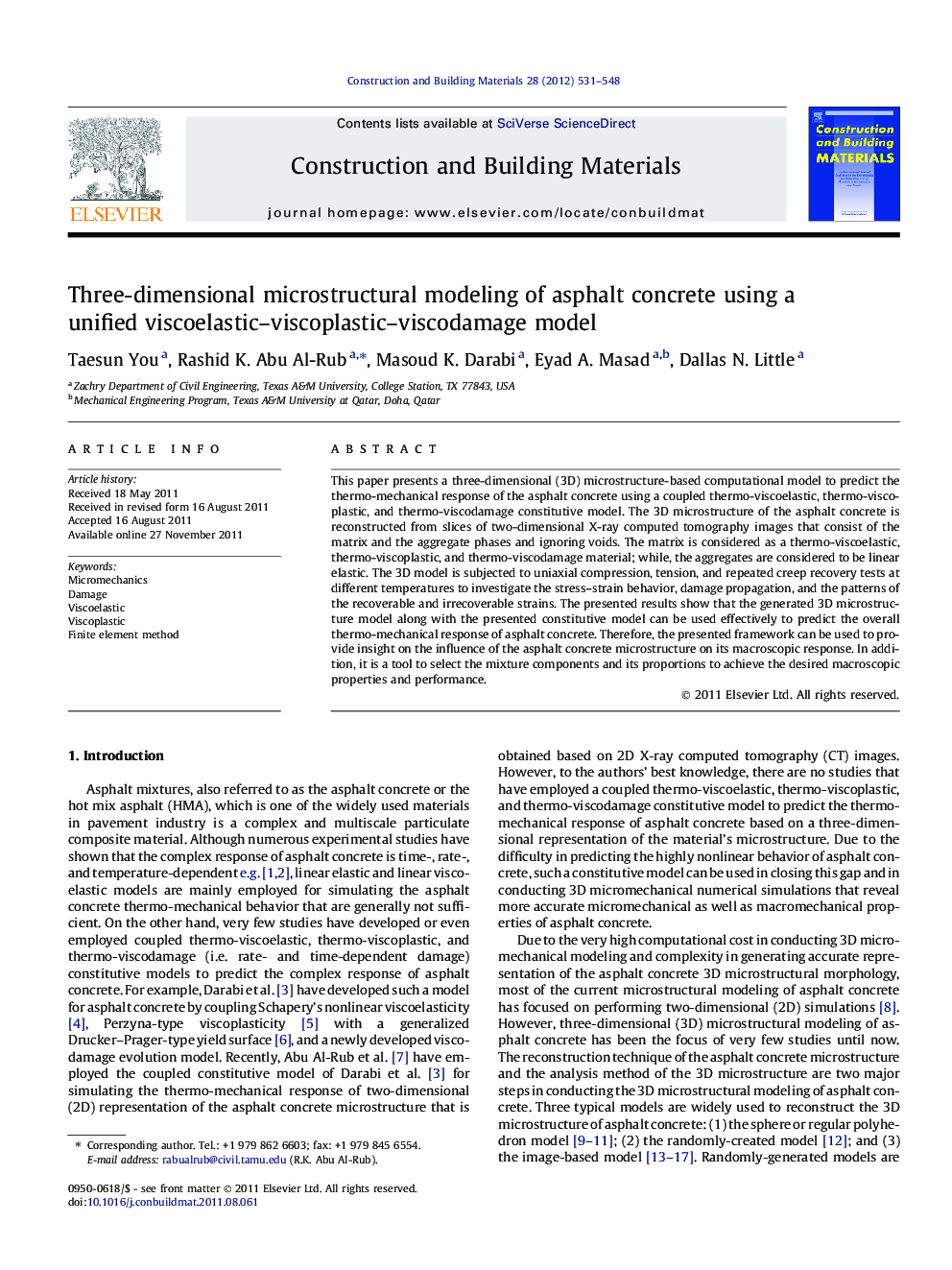| Article ID | Journal | Published Year | Pages | File Type |
|---|---|---|---|---|
| 259608 | Construction and Building Materials | 2012 | 18 Pages |
This paper presents a three-dimensional (3D) microstructure-based computational model to predict the thermo-mechanical response of the asphalt concrete using a coupled thermo-viscoelastic, thermo-viscoplastic, and thermo-viscodamage constitutive model. The 3D microstructure of the asphalt concrete is reconstructed from slices of two-dimensional X-ray computed tomography images that consist of the matrix and the aggregate phases and ignoring voids. The matrix is considered as a thermo-viscoelastic, thermo-viscoplastic, and thermo-viscodamage material; while, the aggregates are considered to be linear elastic. The 3D model is subjected to uniaxial compression, tension, and repeated creep recovery tests at different temperatures to investigate the stress–strain behavior, damage propagation, and the patterns of the recoverable and irrecoverable strains. The presented results show that the generated 3D microstructure model along with the presented constitutive model can be used effectively to predict the overall thermo-mechanical response of asphalt concrete. Therefore, the presented framework can be used to provide insight on the influence of the asphalt concrete microstructure on its macroscopic response. In addition, it is a tool to select the mixture components and its proportions to achieve the desired macroscopic properties and performance.
► Three-dimensional microstructural model for asphalt concrete is modeled. ► Thermo-viscoelastic, viscoplastic, and viscodamage response is simulated. ► X-ray computed tomography images are used to construct the concrete microstructure. ► Crack patterns due to various loading conditions are simulated.
